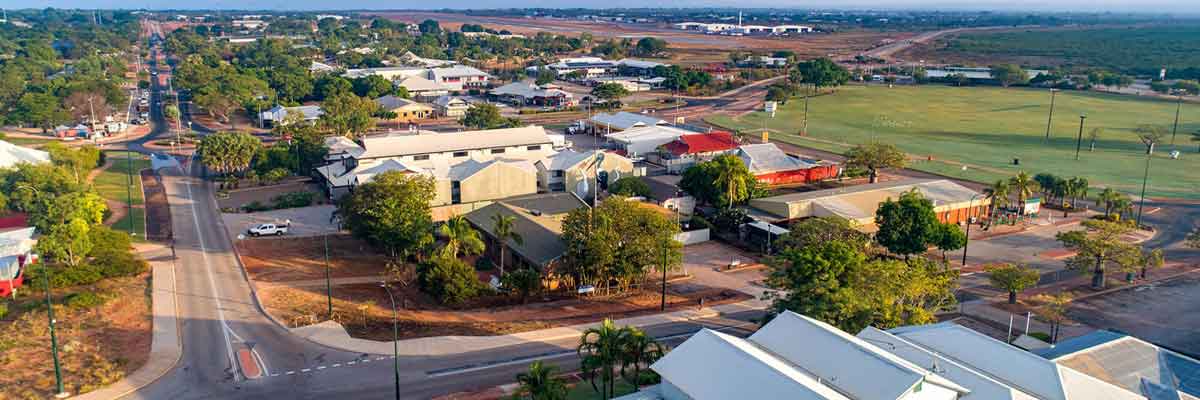There Was No Fat Lady Singing
The next in our series from Wendy.
********************************************************************************************
We watched the movie The End of Suburbia last night. I’ve been waiting a long time to see the film, but after having seen it, I’m actually glad that I didn’t have the opportunity to see it sooner. I like the timing of it all. Here, I’ve planned this series of posts about why we should stay in suburbia, and then the movie comes in the mail. It seems almost too fortuitous, almost fated.
Deus Ex Machina wasn’t as enthusiastic about the movie as I was (when he saw what it was he grumpled something about it being more of that fundamentalist crap). I asked Deus Ex Machina what he thought about the film after we watched it, and his response was, “They didn’t say anything new.”
Basically, the movie was a history of how our country adopted a suburban mindset. The original idea behind the suburb was to give city-dwellers the opportunity to move outside of the crowded and dirty environment of the newly industrialized cities into a cleaner community, usually consisting of residential housing with no industry or retail outlets within close proximity to where people lived. The hope was to give people a “taste” of country living.
Nothing about the film was objective. The filmmakers obviously had a very poor opinion of the suburbs. They said suburbs were often named for the “thing they destroyed, and Oak Meadows had neither oak trees nor meadows and Quail Run had no quails ” (probably true), and houses were referred to as “McMansions”, a derogatory phrase I have often used myself to describe some of the newer developments.
I have to admit that I have often had disdain for housing developments, especially subdivisions built on top of former farm land.
One such housing development is being built in what was once a beautifully wooded area across from the place where we cross-country ski. A large swath of acreage is now dotted with huge, two-story homes that stick out of the ground like a swollen thumb – all of the trees having been razed to make room for the houses, and quite frankly, the houses look a little out of place. The architecture definitely doesn’t complement the environment, and it’s obvious that whoever planned those houses wasn’t trying to make them blend in. In addition, all of the houses are the same neutral tan color, and they’re all the same Hollywood-Hills-Mansion-type architecture with three-car garages and tiny fenced areas where little yippy dogs or children with plastic riding toys play.
Right in front of this new subdivision, however, is an older house – not much older. It was probably built in the late 1980′s or early 1990′s. I saw it for sale not too long ago, probably because the original owner didn’t want to be surrounded by McMansions. The new owners have put on a couple of additions. On the right side of the house, facing it from the road, they built a chicken coop and a pig sty. On the left side of the house, facing it from the road, they have a new horse barn.
Less than a mile up the road from this new subdivision is a large parcel of land owned by the municipality in which it is located. The town refurbished the old farmhouse (which is the typical Big House, Little House, Back House, Barn New England-style farmhouse construction) and they are leasing it to a young couple who have turned the property into an organic farm. They operate a farm school for area children and a CSA during the summers, and they have organic eggs available all year long.
I love the juxtaposition of the McMansions and the pig wallow, the manicured surburban lawn and the chicken coop, only a minute or so by car from a full-working farm complete with cows, sheep, chickens, pigs and a huge garden.
Fact is, that’s my vision of the future of suburbia. Small, closely packed, interdependent homesteads. Everyone has a garden, and maybe I grow tomatoes and my neighbor grows potatoes, and we trade. Maybe a few people have chickens, and some people raise rabbits. My nextdoor neighbor has an acre lot, and maybe he would raise goats or pigs. My neighbors down the road have three acres, and maybe they’ll have a dairy cow, or raise a couple of steer.
The filmmakers seemed to have a similar vision, although their idea wasn’t as rose-tinted as mine. James Kuntsler says in his opinion today’s suburbs will be tomorrow’s slums.
I took offense to that, but before I could successfully poke holes in his theory, I needed a good definition.
What is a slum and how can the assertion that today’s suburbs are tomorrow’s slums be justified? According to Free Dictionary Online, a slum is a heavily populated urban area characterized by substandard housing and squalor.
By definition, “suburbs” are not “urban.” So, there ya go. They can’t become slums.
Of course, that’s not enough for me to completely debunk his silly comment.
Part of his belief stems from the fact that in his opinion, in the future, large suburban homes will not be single-family, but will house multiple families. I believe this will become the case. However, it is my belief that the “multiple” families, will actually be “multiple” generations. For instance, my daughter, her husband and their daughter might, someday, live with me.
My sister and her daughter have lived with my parents in their suburban home for the last ten years. My son and his friend recently moved down and lived with my parents. There were six people living in their four bedroom, two and a half bath, 2200 sq ft house. That’s about 367 sq ft per person. I’m not sure where “squalor” fits into the picture, though, and I’m relatively confident that by no stretch of the imagination could my parents’ home be considered “substandard.”
The biggest problem with his assertion lies not in who might in the future occupy suburban housing, but rather the fact of where suburbs are located.
For the first hour of the movie, the filmmakers and guest speakers hammered home the fact that the suburban lifestyle is dependent on cheap oil. According to scientists and researchers, America reached Peak Oil production in the 1970′s, and most experts agree that the world’s oil production has already peaked or will have peaked by 2020.
If this is true, suburbs, which are dependent on the availability of cheap oil, will more likely be abandoned, than be peopled by individuals who can not afford transportation to jobs in the city and back to their homes in the suburbs.
Since suburbs are, by definition, largely residential and “dependent on cities” for jobs and such, people who need to have a job (which is, like, anyone who wants to eat), but have no means of transportation other than human power, aren’t likely to live very far from their jobs.
I agree that suburban sprawl is a bad thing, and I hate to see new home construction, especially when there are so many houses on the market, and there are so many developed areas that just need to be rehabbed. Even more than housing, however, I hate to see new construction of retail spaces. How many shopping centers do we need?
I agree with the filmmakers that the frenzy of construction that created our suburban communities has likely ended. We may see a few new subdivisions going up, a few new “old school” shopping centers under construction, but I don’t see it progressing at the same manic pace that has been present for the past twenty years.
The filmmakers, Kuntsler in particular, state that the only communities that will survive the crisis are “walkable” communities, and with this, I am inclined to agree, to an extent. What I disagree with, however, is the idea that we need to “create” NEW communities.
What I think Kuntsler is discounting is the motivation of suburbanites, like me, to make our habitats fit our needs. Human beings are incredibly adaptive. That’s why we have been able to survive on nearly every continent on the earth, and not just in these modern times. There have been people on every continent and in every environment (hot and cold, arid and tropical), except Antarctica, for thousands of years.
In a comment on another blog some time ago, I alluded to my vision of the future. It includes gardens in front yards and alternative forms of transportation, and computers and cellphones. My hope is that people will willngly give up those things that don’t enrich our lives to preserve the technologies that are most beneficial.
I do completely agree with Kuntsler, though, in his assertion that we need to figure out today, what we might be able to do in an oil starved future. He is in favor of the development of more “walkable communities.” The problem I have with this idea, however, is the “development” part. Where should we put these communities? More importantly, why should we begin constructing something NEW? Why not leave alone our undeveloped lands and remodel our suburbs?
I say, we shouldn’t give up our suburbs without a fight, and that fight should include our reorganizing our suburbs INTO those “walkable” communities Kuntsler is so enamored of.
To start, we could have more people telecommuting. I’ve been a secretary from my home office for ten years. Any job that can be done in an office, I can do from my remote location … except file. In fact, I wrote a marketing piece a few years ago that says just that, and more. If you’re driving to work and what you do could be done using the Internet, email, facsimile (have you seen the prices on office machines? Cheap, cheap!), or phone, I would encourage you to really have a tete-a-tete with your boss regarding telecommuting, at least a couple of days a week (feel free to use any of the points in the above article in your persuasion ![]() .
.
As fossil fuel based power generation becomes less reliable, I see more homeowners installing alternative energy sources. Maybe I can’t afford a big enough system to power my whole house, but if I can have enough to power my computer, I can still earn a living. And maybe I will decide that I can do without electric lights, television, electric clothes dryers and my electricity using oil-burning furnace to reserve the power I need for my computer and peripherals, washing machine, stove, dishwasher, refrigerator, and freezer.
For those who don’t do jobs that can be done over the Internet, I see more homebased businesses that support local residents’ needs like a home-based seamstress or a resurgence in such occupations as cobblers. Maybe my neighbor will open up a tool repair shop, where I can get my axe sharpened, or my pasta maker repaired.
Maybe I’ll put my Teacher’s Certification to use and start an alternative school in my living room.
Of course, maybe the filmmakers and I are actually saying the same thing – the suburbs as we know them are changing. In the future, the suburbs of today will consist of multi-use pieces of land with small homesteads and home businesses – walkable communities, minus the European-esque cafes and storefronts with walk-up apartments where the store-owners live. The difference is that I don’t see us strolling leisurely down tree-lined sidewalks passed an outdoor cafe complete with wrought-iron bistro tables and chairs, pointing excitedly at items carefully displayed in shop windows.
I see a suburb – big houses, green lawns, lawn furniture and outdoor play structures. But there’s a Mr. Bean working at a pedal-powered grinding stone in his garage, and Ms. Williams is taking her goats (instead of her dog) for a walk, and Judy Spivey is outside with a group of kids digging worms out of the compost pile as part of their science project. Lucy Campbell is getting married next week, and she’s standing in Julie Simmons’ living room on a kitchen chair having the final fitting of her bridal gown. She’s anxious to get done, because she’s meeting with Bonita Johnson, who has a hair salon in what was formerly her garage, and they’re going to talk about hairstyles for the wedding. Angela Smythe, the Notary/wedding planner, who will be performing the ceremony, is in her backyard talking with her husband, James, a carpenter, about some modifications to their wedding gazebo. Sally Ackers, the midwife, is visiting with Theresa Parker, who’s due in two months.
I could go on like this forever, but you get the point.
Maybe it is an “end to suburbia,” but I’m not giving up my little house on a quarter acre, which will always be located just outside of an “urban” area, but not quite in the country. I don’t know what we’ll call it in the future, but until that fat lady starts singing, it ain’t the end.






